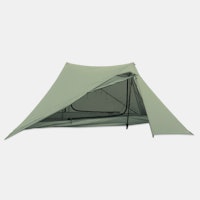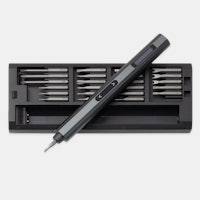Click to view our Accessibility Statement or contact us with accessibility-related questions






How well does this tent stand up to rain and wind? I am in Scotland where it rains alot and storms can whip up from no where. Don't want to be flying a kite instead of being tucked inside nice a cosy and dry.

Cancel
search
close
Sort by: Newest
keyboard_arrow_down
dandurston
5116
Dan Durston
Apr 7, 2020
The X-Mid is truly designed to be very weather capable and not merely hyped as such, so it has genuinely useful features like a full coverage fly that extends to the ground (to block wind and rain splatter), fly first pitch (to keep the inner dry) and lots of other harsh weather capable features like dual large vents (that can shut to block wind and spindrift), peak guylines (to better anchor it high winds), protected entryways (so rain doesn't drip on the floor), thick waterproof fabric coatings (posted HH specs are after wear testing, which is far more rigorous than the new fabric specs other use) etc. The X-Mid is as good as it gets for rain performance in a 3 season tent. It's not a 4-season tent for 100km/hr winds but lots of folks over the UK and Scotland are using them successfully in pretty stiff winds.
(Edited)
Sanchell
3
Jul 29, 2020
The tensioner slipped on the renforcing line comming from the top. Which I bruised my ribs trying to keep the pole steady by putting my body against it. The slack at the reinforcing line caused extra force on the stake, this caused it to pull out it even had a large rock on the stake. Finally the pole ripped threw the top just outside of the reinforced area.
(Edited)

dandurston
5116
Dan Durston
Jul 30, 2020
SanchellThat sounds like some pretty intense conditions. It sounds like you're saying the optional peak guylines were used to help support the shelter, but there was enough force such that the cord slipped in the tensioner, causing that peak guyline to be loose so then the tent was mostly anchored by the 4 corner stakes. Subsequently, the additional force on those was enough to rip one out. When that happens, the canopy will be loose and partially collapse, since those are essential stakes. As the tent collapses, certainly the peak could fly off the tip of the pole, where the pole tip can end up jamming through the fabric somewhere as it collapses.
The peak guylines are 2.5mm which is pretty standard to use in LineLoc3's. Almost all companies use the same but a few use thinner line (1.5mm) while some user thicker (3-3.5mm). We spec 2.5mm because thicker 3.5mm adds quite a bit of weight - especially for the longer peak lines, but some users in windy areas do prefer to swap that out for thicker cord as it will hold to higher forces. The 2.5mm cord tends to slip at 60-90 lbs of force, whereas 3.5mm can hold to about 100 lbs.
For high wind situations it is essential that the stakes are in solidly enough that they're not going to pull out. Regardless of how well built any trekking pole tent is, it's going partially collapse if it loses an essential stake.
Overall, it sounds like these conditions were harsh enough that thicker peak guylines were needed, and wider stakes would be helpful as well. If you think you might be in conditions like this again, both of those would be good upgrades.
PRODUCTS YOU MAY LIKE
Trending Posts in More Community Picks

Graham88
Completely surprised by the lack of blade diversity here on Drop...
I’ve been a collector of Blades since before my teens, and a retailer coming up on 15… or maybe 20 years. Drop has really been kind of an interesting experience for me, because I do occasionally get to see some unusual tech and sometimes EDC items that otherwise I might not have been aware of. And maybe it’s because I have a deep love of cutlery and bladed weapons, but I find myself trolling through the site looking at it what’s available; and it’s just it’s pretty much the same. And the bladed community here is just always confused me.. every single knife is about the same, they’re almost all drop points and although the handle materials change and brands change.. it’s really just the same knife over and over and over again... occasionally you’ll see a tanto or a slight variant; but rarely… and almost never a serrated blade. And I’m just deeply amazed at this diversion of serrated blades. And I’m just surprised there isn’t more of a request for diversity here.... and I...
Mar 12, 2020
JellyDPhoto
Can we get Sony E-Mount or other mirrorless camera options please..
Would be nice to see some Sony E mount full frame cameras on here. I currently shoot with a A99 and they killed the lense path for better or more option lenses and now is all E-Mount. 🤔
Jan 13, 2020
RayF
There Are Pandas, and Then There Are Pandas.
And this isn't either of them! The Pandas we're talking about here, are watches, not bears. And what got me thinking about them (again) was a link posted this morning by @cm.rook who pointed a few of us to the very attractive (and not terribly priced) Yema "Rallygraph" Panda which, in it's most traditional arrangement, looks like the one on the left, but can also be had in the version on the right: The model on the left is a true Panda, while the model on the right is called a reverse Panda. The reason for that distinction is clear--Panda bears, only come in the first arrangement. Now at this point, everyone should be thinking about the most well-know Panda, The Rolex Panda, which is actually a Daytona, and among Rolex Daytonas, the most famous of which is the Paul Newman Daytona, which was famous first, because it was Paul's, and second because it sold at auction for $17.8 million (US Dollars). The story of that auction is well-known so I'll only...
Nov 8, 2019





